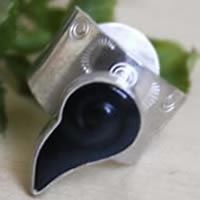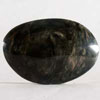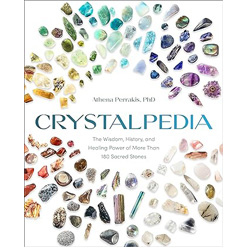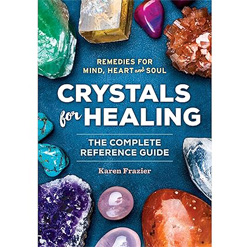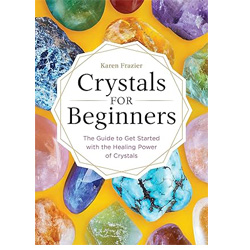- Jewelry
- Inspiration
- Our imagination
- Birthstones
- Celebrating with Eternal Flowers
- Druids and druidesses
- Flower meanings
- History, archeology jewelry
- History and healing properties of metals
- History and healing properties of stone
- Illumination jewelry
- Japanese symbols
- Maya calendar jewelry
- Stone color symbolism
- Stones catalogue
- Wedding anniversaries
- Searches a theme on the site
- Good Deals
- Paintings
- About
- Contact
JEWELRY
- Anklet
- Bracelets
- Brooches
- Cufflinks
- Earrings
- Pendants & Necklaces
- Rings
- Draw your jewelry
- How to clean your jewel
- Metal we used
INSPIRATION
- Our imagination
- Birthstones
- Celebrating with Eternal Flowers
- Druids and druidesses
- Flower meanings
- History, archeology jewelry
- History and healing properties of metals
- History and healing properties stones
- Illumination jewelry
- Japanese symbols
- Maya calendar jewelry
- Stone color symbolism
- Stones Catalogue
- Wedding anniversaries
- Searches a theme on the site
Obsidian: history, healing properties and lithotherapy
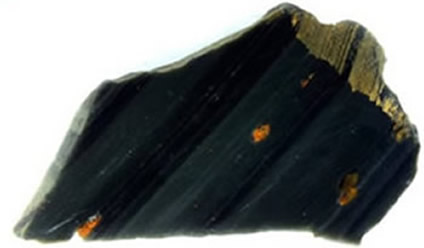
Obsidian properties

Obsidian takes its name from Obsius, a Roman mentioned in the writings of Pliny the Elder. In his work Natural History, Pliny describes a stone called obsianus lapis. According to Pliny, this black, glassy rock was discovered in Ethiopia, giving it an air of exoticism and antiquity. However, some modern scholars question this interpretation, suggesting that it might be a transcription error or a confusion with another term. It is also possible that the name referred to a similar stone used at the time, rather than the obsidian we know today. These debates highlight the richness and complexity of the etymological history of this fascinating rock.
Known by the nickname "volcanic glass," obsidian is an igneous rock of volcanic origin, formed by the rapid cooling of acidic lava, typically rhyolitic in composition. This rapid process prevents crystallization, giving obsidian its glassy texture and unique amorphous structure. It is usually composed of 70% or more silica, making it a very acidic rock. This silica content explains its luster and its conchoidal fracture (shell-like), a key characteristic that made it highly prized for making sharp tools, especially in prehistoric times.
Obsidian primarily forms in environments where lava cools rapidly, often at the surface or in contact with water. As a result, it is commonly found near ancient volcanoes or in fields of solidified lava. Its glassy texture and lack of crystalline structure make it an amorphous rock, and its status as a "mineral" in geological terms is sometimes debated because it does not crystallize under the usual conditions of other stones.
The color range of obsidian is as varied as it is fascinating. While black is the most common shade, several other colors are also present, often due to mineral inclusions:
- Silver Obsidian: gray with silver hues.
- Red Obsidian: resulting from the presence of iron oxides.
- Rainbow or Golden Obsidian: iridescent reflections that create captivating color plays.
- Snowflake Obsidian (or speckled Obsidian): characterized by inclusions of cristobalite that form star-like or snowflake patterns.
Obsidian has a hardness of 5 to 5.5 on the Mohs scale, which makes it relatively fragile and sensitive to scratches. Its density ranges between 2.4 and 2.6 g/cm³, making it lighter compared to other volcanic rocks. The absence of a crystalline structure in obsidian makes it an amorphous rock, which is why it is more brittle and less resistant than crystalline materials.
History, legends and beliefs about obsidian
Obsidian played a crucial role in Stone Age cultures due to its ease of shaping and exceptional sharpness. Used to make tools such as knives, spears, arrows, and axes, it was essential for hunting, butchering, and other survival activities. Furthermore, its ability to be polished made it a valuable material for creating rudimentary mirrors, demonstrating its versatility and importance in ancient civilizations.
Evidence of its use dates back around 1.5 million years BCE, with notable discoveries at sites such as Kariandusi, located along the Rift Valley in Kenya, showing its early and widespread use among early humans. These discoveries are primarily linked to human groups like Homo erectus, who were among the first to use this rock for cutting tools.
Obsidian played a pivotal role in the history of surgery as early as 7000 BCE, being widely used for its exceptional cutting properties. One of the most remarkable surgical procedures was trepanation, in which part of the cranial bone was removed to treat injuries or facilitate spiritual rituals. Recent research has shown that the use of obsidian in these procedures was remarkably effective, with a survival rate of nearly two-thirds of the patients. These practices were observed in societies such as those in the Indus Valley, Mesoamerica, and other prehistoric cultures.
In Mesopotamia, obsidian blades have been found dating back to the 5th millennium BCE, attesting to its early use in the region, with evidence of its extraction in Turkey. In the Fertile Crescent, geological studies have traced trade routes based on the unique chemical composition of each source, demonstrating the economic importance of this rock in ancient civilizations.
Obsidian was not only used as a practical material in Mesopotamia but was also seen as a bridge between worlds. Obsidian mirrors, used for divination, were believed to allow shamans to communicate with spirits or travel to the afterlife.
In Ancient Egypt, obsidian was precious and imported from the Red Sea, Greece, and Italy, attesting to its value and versatility. Used in the creation of decorative objects, and tools, it was also an essential part of circumcision rituals due to its sharpness and precision in cutting.
Even before the advent of iron, the Greeks of the island of Milos had already recognized the value of obsidian, which became a source of wealth for them due to its thriving trade.
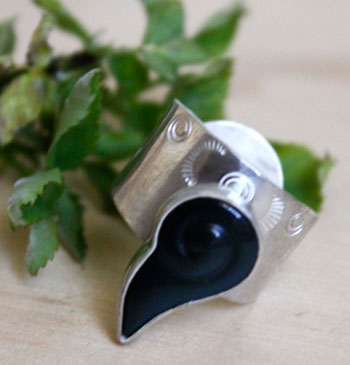
In Europe, trade networks were established as early as 8000 BCE between Italy and the south of France to circulate this stone. This trade seems to have been organized by artisan craftsmen who would gather the raw material and shape a rough block (nucleus) for transport. It was only in various villages that they would form obsidian blades, depending on demand.
The ancient trade networks based on obsidian were so sophisticated that, thanks to the unique chemical composition of each deposit, modern researchers can trace trade routes. For example, deposits in Anatolia supplied Mesopotamian civilizations, and traces of trade have been found in Europe, Asia, and Africa.
In America, particularly in Mexico, obsidian holds significant importance, playing a central role in the study of Pre-Hispanic civilizations. It is explored from various perspectives, ranging from trade—sometimes over long distances—to warfare and religion. Its diverse uses extended to a wide range of areas, whether as tools, decorative objects, votive artifacts, or weapons, demonstrating its multifunctional role within these ancient societies.
In Mexico, a fascinating discovery lies in the wooden sword with obsidian blades, known as the macuahuitl. This formidable weapon was feared for its ability to inflict significant damage, capable of sawing as well as cutting, showcasing the ingenuity of ancient civilizations in using natural materials to create effective weapons.
Each obsidian deposit, closely linked to a specific volcano, produces a unique variety of this rock, allowing the tracing of trade exchanges over vast distances, some extending more than 400 km from the source. This diversity of obsidian also led to differences in value based on its properties and colors, contributing to its importance in trade and cultural exchanges between ancient civilizations.
Obsidian held a sacred and mystical place among Pre-Columbian peoples in the Americas, especially for the Aztecs, who revered it as a divine element. According to certain versions of the creation myths, the earth goddess, Coatlicue, used an obsidian blade to give birth to the moon, Coyolxanuhqui, and the stars, symbolizing the creative and regenerative power of this stone. For the Aztecs, obsidian, called Iztli or Teotetl, was closely associated with the god of the "smoking mirror," Tezcatlipoca, linked to witchcraft and divination. He represented the antithesis of Quetzalcóatl, the feathered serpent god.
Many other Aztec gods were also associated with obsidian, such as Itzpapalotl, the "obsidian butterfly goddess," a fierce warrior goddess, or Itztlacoliuhqui, the "god of the curved obsidian blade," ruler of frost and cold. These divine associations highlight the sacred and profound spiritual significance of obsidian in Aztec cosmology.
The Aztecs also used obsidian mirrors for divination and to foresee the future. By pouring water on the surface of the mirror, they would observe shapes emerging in the reflection, a practice closely linked to the god Tezcatlipoca, symbolizing esoteric knowledge and witchcraft. These mirrors were considered portals to the spiritual world, allowing direct communication with the deities.
In a Pre-Hispanic tomb on the coast of Peru, a fascinating discovery was made: a complete surgical kit, testifying to the medical advancements of ancient civilizations. Among the tools found were obsidian knives, whale tooth spatulas, cotton balls, cloths, bandages, thread, and needles, illustrating the sophisticated use of obsidian in ancient medical practices.
The Navajos, for their part, had a deep spiritual connection with obsidian. Considered one of the four sacred stones, it was associated with four sacred mountains precisely located on their territory. The Obsidian Mountain, Dzil bash'zhini, now identified as Mount Hesperus, played a central role in their cosmology. According to some versions of their creation myth, the heart of man was shaped by the gods from obsidian, emphasizing the primacy of this stone in their worldview and concept of humanity. Obsidian was often used in ceremonies to ensure protection or invoke the spirits of the mountains, reinforcing its sacred role.
The idea of practicing divination through an obsidian mirror has persisted through the centuries, remaining alive and fascinating. Dr. John Dee (1527–1608), a prominent scholar at the English court, helped popularize this practice. As an alchemist, mathematician, astronomer, magician, and astrologer, he was at the height of his fame. Possessing a "magic mirror" made of obsidian, which he supposedly received as a gift from the angel Uriel according to legend, he captivated the minds of his time. This mirror, actually an Aztec artifact brought to Europe after the conquest, was his primary tool for exploring the future. His reputation was built on his supposed ability to thwart numerous plots against the English crown, adding a layer of mystery and admiration to his already legendary figure.
Today, obsidian is widely used in specialized fields such as cardiac and ocular surgery, where its ultra-fine blade offers unmatched precision, surpassing even steel scalpels. This use is due to the volcanic rock’s structure, which, once polished, becomes exceptionally sharp, allowing for extremely fine and clean incisions, essential for delicate procedures where accuracy is crucial. Its hardness and sharpness are ideal for minimal interventions in sensitive areas, such as blood vessels or eye tissues, reducing the risk of complications and scarring. This application of obsidian in modern medicine attests to the trust placed in its unique properties, and it is found in some advanced surgical instruments.
In contemporary jewelry, obsidian has found its place in refined creations, where its glossy appearance and varied colors (black, gold, green, and even iridescent shades) give it a unique aesthetic dimension. It is used in the creation of necklaces, bracelets, earrings, and pendants, bringing a touch of sophisticated elegance to these pieces of jewelry. Moreover, obsidian is prized in the making of high-end decorative objects such as sculptures, vases, clocks, and accessories, thanks to its smooth texture and ability to take on complex and detailed shapes. These artistic creations exploit obsidian not only for its beauty but also for its history and symbolism, making each object a unique piece.
Obsidian also plays a role in the ornamentation of luxury chess pieces, where it is chosen for its exceptional wear resistance and its ability to maintain a flawless finish over time. The intense black color of obsidian, combined with its natural shine, makes it a sought-after material for high-end chess sets, providing a timeless aesthetic to the game pieces. Moreover, it also finds its place in collectible objects or furniture pieces, adding rarity and value to prestigious handcrafted creations.
In the manufacturing of piano keys, obsidian is used for its exceptional durability and resistance to impact, in addition to its unique shine, which adds a modern and refined touch to the instruments. Obsidian keys, though rare, provide a distinct visual and tactile dimension, enhancing the musical experience. Its use in this domain highlights the evolution of obsidian, not only as a utilitarian stone but also as a luxury and prestige material, appreciated in both functional and aesthetic objects.
These modern applications demonstrate the adaptability of obsidian, which has evolved and reinvented itself over the centuries, moving from a primitive rock used for survival tools to a sought-after material in art, medicine, and luxury. Today, obsidian is recognized for its versatility and beauty, uniting tradition and modernity in a multitude of creations.
Mines: Greece, Iceland, Italy, Japan, Mexico, Peru, the USA, Armenia, Azerbaijan, Chili and Guatemala.
Healing properties and benefits of obsidian
Throughout human history, man has attributed various healing properties, virtues, and beliefs to obsidian. The information presented here is shared for cultural and historical purposes, to illustrate the symbolic relationship between this stone and man throughout time and civilizations. It does not constitute a therapeutic or medical recommendation.
- Obsidian is often associated with justice, embodying balance and integrity in decision-making. It is considered a stone that helps restore harmony, both emotionally and spiritually, allowing for the release of mental blockages and the establishment of a clearer and more objective view of situations.
- The healing properties of obsidian extend to a wide range of ailments, from bruises and inflammation to cysts, fibroids, and tumors. It has been used since ancient times to treat various physical conditions, and its natural virtues provide relief by acting as a catalyst for healing.
- In lithotherapy, obsidian is often used to stimulate blood circulation, accelerate the healing of wounds, and reduce swelling.
- In addition to its anti-inflammatory properties, obsidian is known for its effectiveness in controlling viral and bacterial infections, thus strengthening the immune system. By activating the lymphatic system and eliminating toxins from the body, it supports the body’s natural defense mechanisms and prevents infections.
- It is also considered beneficial for digestive health, soothing colon irritations, treating gastroenteritis, and alleviating nausea. In lithotherapy, it is frequently used to relieve gastrointestinal disorders such as indigestion and bloating. Its stimulating properties also promote the regeneration of cells in the digestive tract, contributing to a more balanced digestive system.
- Furthermore, obsidian is reputed for its beneficial properties for men’s health. It is sometimes used in treatments aimed at addressing sexual issues, including circulation problems and sexual dysfunctions. It helps strengthen vital energy and stimulates both physical and emotional well-being, particularly in situations of stress or extreme fatigue.
- By relieving muscle pain associated with arthritis, it improves overall quality of life. Obsidian, especially in the form of stones or heating objects, is used in lithotherapy to treat chronic pain by releasing tension in the muscles and reducing inflammation. It also supports the regeneration of joint tissues and blood circulation in affected areas.
- Obsidian is also known for its emotional purification properties and psychic protection. It helps release negative emotions, past traumas, and limiting thoughts, thus providing deep healing on a mental and spiritual level. By absorbing negative energies, it protects the wearer from external influences, particularly from toxic people or unhealthy environments.
- Known for its beneficial effects on mental clarity, obsidian aids in decision-making by offering a better perception of situations and emotions. It encourages introspective reflection and helps dispel illusions or psychological optical illusions, allowing for a better understanding of oneself and others.
 Please note that all healing properties attributed to stones come from ancient traditions and various cultural sources. This information is provided for informational purposes only and does not constitute medical advice. In case of any health concerns, it is recommended to consult a qualified professional.
Please note that all healing properties attributed to stones come from ancient traditions and various cultural sources. This information is provided for informational purposes only and does not constitute medical advice. In case of any health concerns, it is recommended to consult a qualified professional.
Obsidian jewelry samples
To learn more about litotherapy, we recommend you the following books:

